Cyber-Duck host an annual Quack Hack that challenges our employees to use new technology and develop useful solutions to real world problems. Each team is given a brief and a core technology to use and then the Hack begins! Over 36 hours, the teams work together to research, plan and develop their products ready for a show and tell with a working demo at the end. My team Pharma-See developed a hack that's designed to make medical instructions more accessible for everyone.
Team Pharma-See is made up of 6 members, including Sylvain, Wai, David (Director and backend developers), Sam (UX Designer), Jo (QA), and Lina (HR and Finance Director).
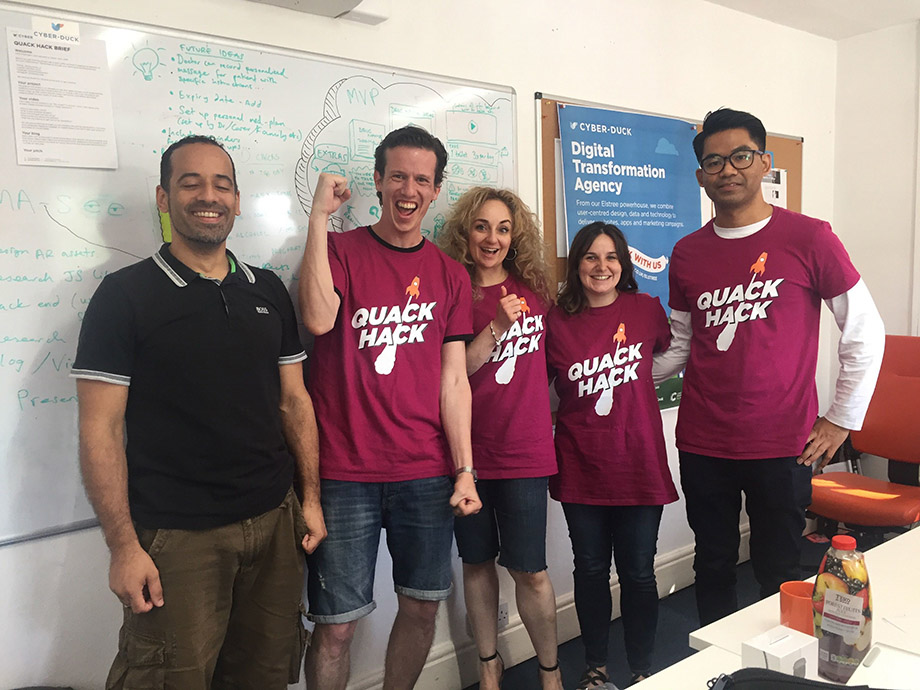
My team - David, Sam, Lina, myself, and Wai, from left to right.
We wanted to make medical instructions more accessible for everyone; especially those with visual and hearing impairments, dementia, dyslexia, etc.

The demo of our final product!
What was the challenge?
Our initial brief was to develop an app to take the pain out of reading medication instructions using augmented reality. As you can imagine, setting up a working app overnight with this added capability would be extremely difficult. So, we focused on the augmented reality aspect and wanted to focus on accessibility most of all.
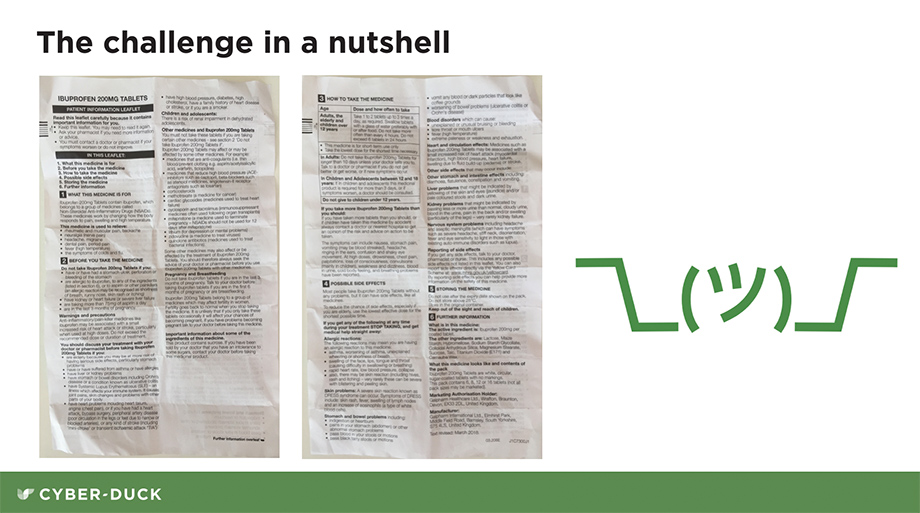
A snapshot of what we were up against.
In our research, we discovered that the NHS spends £16 billion on prescriptions per year, with £9 billion from GPs and the other £7 billion from hospital treatments. Additionally, £2.6 billion is spent by the general public on over-the-counter prescriptions every year. With this in mind, we considered how much of the population had different impairments that would struggle to read the prescription instructions. 800,000 people in the UK have been diagnosed with dementia and 23% of the UK will be older than 65 by 2035.
A study we came across interviewed 100 visually impaired people, and the results were shocking. 89% of those interviewed were unable to read the medication instructions and 96% did not tell their GP of their struggles. This really tugged at our heartstrings and put into perspective many people who are struggling to read medication instructions; we wanted to come up with a future-proof method for helping people and make something accessible for all.
What is Pharma-See?
We wanted our product to meet a gap in the market using relevant new technology to help people. When you pick up any sort of medication from your doctor or the store, there’s a leaflet of instructions inside that contains a vast amount of information in very small text. This can be daunting for anyone to read through, so we wanted to provide this information in a concise, user-friendly, and engaging way.
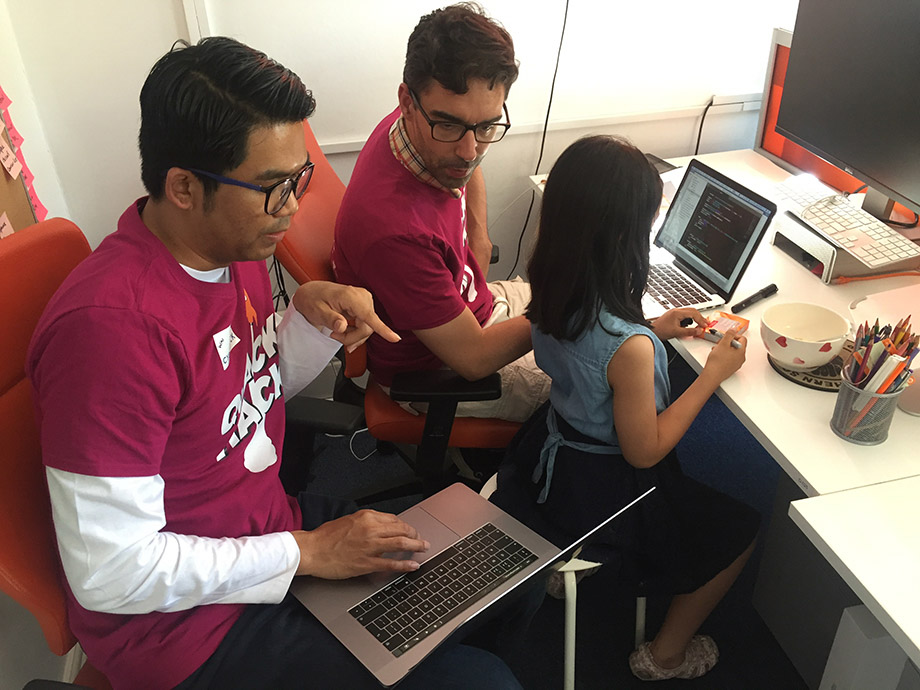
Our tech team working together, along with Sylvain's daughter.
Our product is unique because it provides a solution for different impairments or complications people might have when reading medication instructions, e.g. dyslexia, dyspraxia, or dyscalculia. We have audio and voice controls for the visually impaired; audio and subtitles for hearing impaired or anyone with dyslexia/dyspraxia, etc, and planned to set up reminders to take medication for the elderly or those with dementia. Unfortunately, there was not enough time to add this element, but it would be the next stage in this project.
What was our process?
Our UX process included research into the technology we wanted to use, which was augmented reality (AR), and how the QR codes work to create pop-ups on mobile. This meant that a usually mundane task could become interactive and engaging. We conducted research into the difficulties and challenges people faced with both taking medication and reading the instructions; and it turns out there are a lot of people out there who struggle with knowing the medication instructions, retaining the information, and remembering to take medication by themselves.
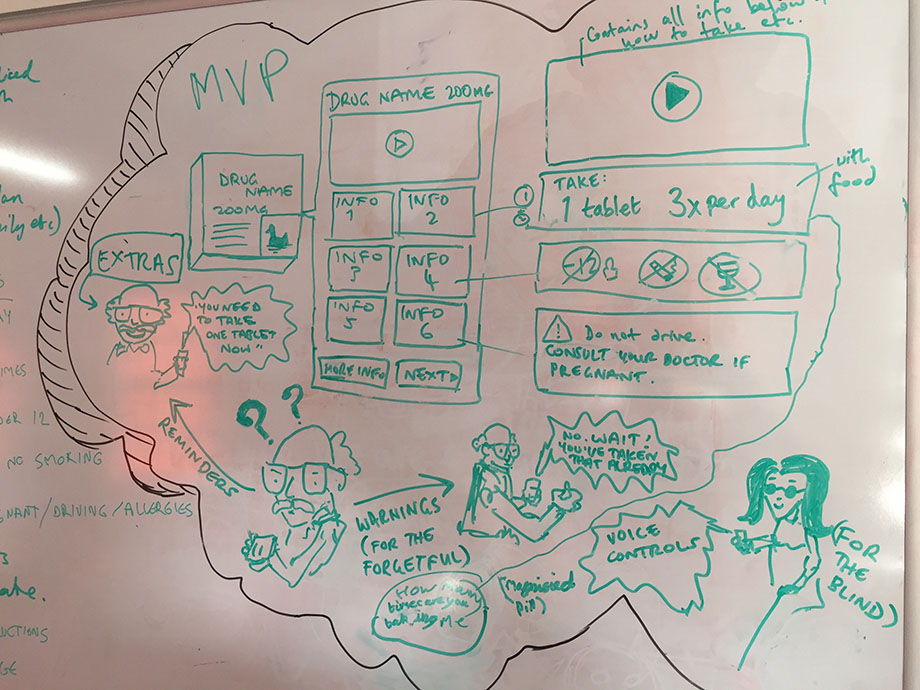
A snapshot of our UX planning process.
The technology we used for this project was A-Frame, AR.JS, and JavaScript. AR.JS runs in your web browser, which means no app to install and meant we could utilise this to create a demo we could show at the Quack Hack. We used this with A-Frame, a framework used to build VR experiences, to add on top of HTML code to provide a working AR experience.
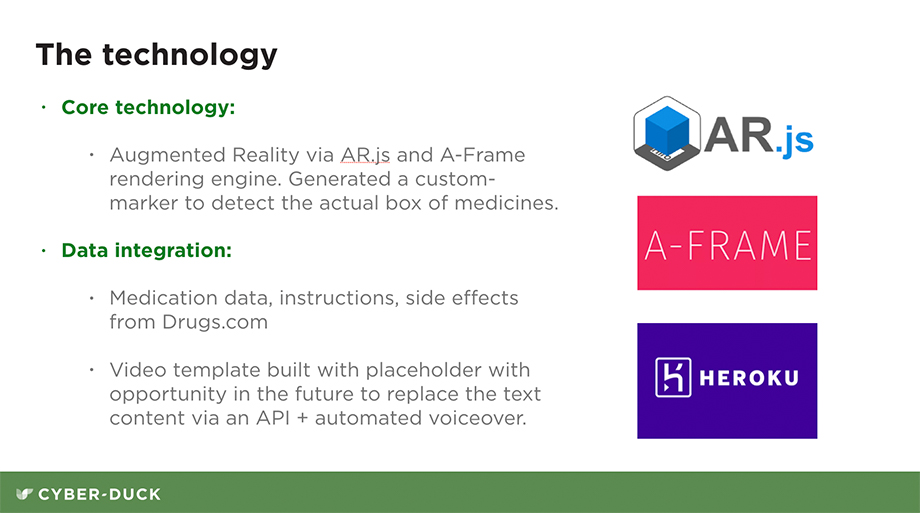
An overview of the technology we used.
What are the future opportunities?
Some of the features of our project focus on accessibility so that anyone anywhere can understand medication prescriptions. We wanted to build an AR pop-up with a video and audio explanation (with subtitles), focusing on the key elements like how to take the medication, what the side effects are, when not to take it, etc. using animation to make it short, sweet and engaging.

A demo of PharmaSee on a laptop.
There are additional text boxes below with icons focusing on more information (which could be read aloud as well), and the option to “see more” to get even greater detail; since one of the limitations is the size of the application – which isn’t too large, so it’d be difficult to fit all the information on at once. This would also be too jarring for the user, so we broke it all up into bitesize information.
As there are an increasing number of people with dementia in the UK, it can be difficult for them to remember to take their medication (meaning they lose some of their independence, and this can cause a strain on family members and carers). We wanted to set up notification reminders for people to take their medicine, so they can take charge of this themselves. To keep this accessible, the notifications would vibrate, light up the screen and make a noise to draw attention to it.
Our project would make a difference to users because a huge number of the population are not getting the help they need for such an important task. Medication is no joke; it can be all too easy to miss a dose, overdose or not know the common side effects to look out for because they were unable to read the prescription pamphlet or simply forgot the information. We want to encourage people to take a more active role in their health, giving them the support they need to take their medicines on time and providing them with the information they are lacking or have forgotten.
We like to think we are designing for the future, as many of our parents and ourselves will need an assistant like Pharma-See in the future; but more importantly, there are people who could benefit from it now. We were delighted that we won this year's hackathon!
Check out the other projects from this year’s Quack Hack:
-
Alerting patients with medical risks through an AI-powered solution for GPs
- Planning reveries with an open banking and AI budgeting web app
- Engaging website users with an AI-powered chatbot
-
Uniting remote teams with an Internet of Things project with gamification
At Cyber-Duck we enjoy out-of-the-box thinking and coming up with fresh solutions. If you have a project or would like to run your own Hackathon to come up with some adventurous new products, our friendly team would be happy to help if you get in touch with us.

